ECUADORIAN FOOD – FLAVOURS YOU CAN ONLY FIND IN ECUADOR

DAYANA
Ecuador is a compendium of landscapes, climates, species of flora and fauna and of the most exquisite flavours. What’s better after a stressful day than to end it with a typical drink, accompanied by a dessert? We invite you to try Ecuadorian food!
Canelazo
Canelazo is a hot cocktail made with water, cinnamon, naranjilla (a typical fruit from Ecuador) and aguardiente. The drink can be tasted as welcome cocktail in the majority of hotels in cities in the Ecuadorian Andes. It is also served at popular dances, cultural gatherings and various public events, especially in cold nights to warm up and lighten the mood. At the “Fiestas de Quito”, that Ecuador’s capital celebrates in December you can drink one or more canelazos and enjoy the warmth of the “Quiteños”.
Colada de avena
Colada de avena is a drink made from water, oats, naranjilla, panela and cinnamon, which is served at home or cheaper restaurants along with your lunch.
Colada Morada
Colada Morada is a traditional drink from Ecuador, served around the “día de los difuntos” (day of the deceased). It is made with purple or black corn flour, fruits, spices and herbs. It is the most desired drink in this period, the majority of restaurants or cafés prepare the drink. In the city of Latacunca, located one and a half hours driving from Quito, the drink is offered all year around in the cafés in front of the train station.
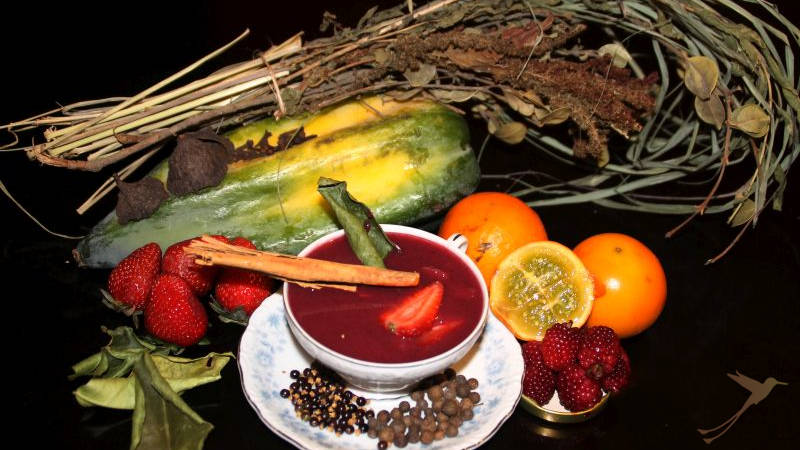
Horchata lojana
Horchata lojana is a drink prepared with flowers and aromatic herbs including escancel, cedron, luisa grass, mint, camomile, melissa, rose essence and others. It has a diuretic and digestive effect. It is served in the whole province of Loja in the south of Ecuador, generally after dinner in all homes and restaurants offer it to their clients.
Rosero
Chicha de Jora
Chicha de Jora is a typical fermented drink from South America. Its main ingredient is malted corn, also called “jora”, that has been used since the time of the Incas, being a holy drink, used in ceremonial acts and festivities in all of the pre-Hispanic cultures in the central Andean area like the the Sun Festinal Inti Raymi, and the Feast of Saints Peter and Paul and at weddings, baptisms, Christmas, Carnival, etc. The area where Chicha de Jora is most drank are Cotacachi, Otavalo, Cayambe, located in the northern Ecuadorian Andes and in the provinces Chimborazo and Azuay in the center of the country. It is important to note that the Chicha de Jora is a simple drink to prepare, however it represents a prominent feature of the indigenous past.
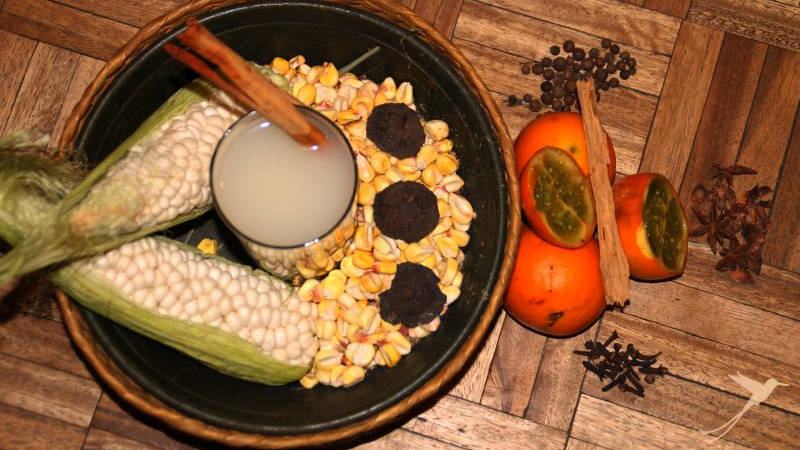
Mistela
Mistela is consumed after lunch. The infusion varies between fruits and herbs and can be of mint, tangerine or peach. But for the traditional preparation it is made with a infusion of orange peel, coffee, cinnamon and clove. The liquor that is added to this composition is sugarcane aguardiente. The delicious mistelas can be found in the Calle Morales, close to the famous street La Ronda at las “Quesadillas de San Juan” or at “La Cruz Verde” in Quito.
Infusions with medical herbs
These waters are infusions, served to cure pains or physical discomfort or to purge or clean the organism. The most known medical herbs are chanca piedra, which helps with kidney stones, valerian, which is for the nervous system, camomile for stomach pain, matico, which can only be found in Ecuador for infections and scars, luisa herbs for sleep and plantain for inflammations and wounds. You can find a series of natural herbs at some of the markets in Quito and make your own infusion.
Jugos de frutas
Jugos de frutas are fresh fruit juices, made from the pulp of fruits mixed with water or milk. They are very desired because of their delicious flavours and are mainly sold at the markets in Ecuador’s cities. Ecuador offers an infinite variety of fruits such as borojó, guanábana, guava, tree tomato, uvillas, tamarind, taxo, strawberry, etc. etc. In every restaurant in Ecuador, including the hotel restaurants delicious juices from Ecuador’s fruits are served.

Dulce de higo
The fig (higo) fruit is cooked with panela honey and is served with cheese. It is made in Ecuadorian homes and is sold at the markets all over the country.
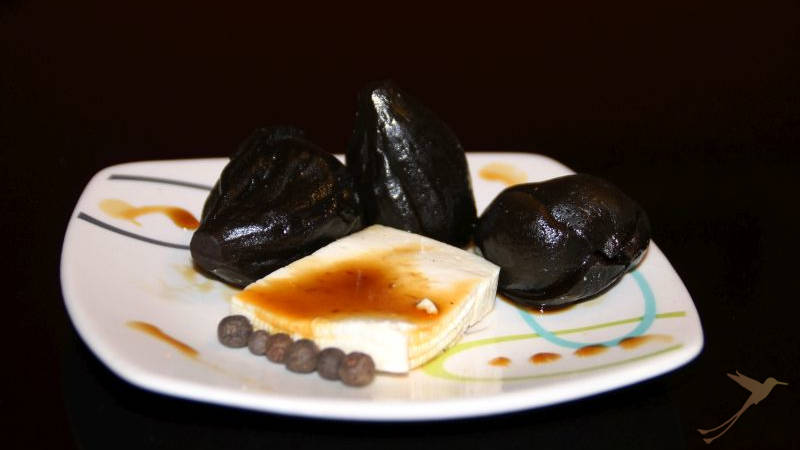
Come y bebe
Come y bebe is a mix of chunks of various fruits like banana, apple, strawberries, papaya, grapes in orange juice. Children like this drink a lot and it is prepared as a dessert after lunch. It is also available at the markets in the cities.
Dulce de zapallo o calabaza
Dulce de zapallo o calabaza is prepared with a vegetable called zapallo. It is slowly cooked over a fire and sweetened with panela and cinnamon, clove and sweet pepper. It is served during “fiestas de Quito” at the markets or at restaurants.
Espumilla
Espumilla is one of the most typical desserts in Ecuador. It’s a creamy foam prepared with egg whites, guava pulp and sugar. It is usually sold in the parks in cities and towns in Ecuador.
Dulce de jucho
Dulce de jucho is a drink that mixes sour and sweet. Its preparation is done with ground cherry and peach, which are cooked in a sugar syrup, cinnamon, clove, sweet pepper and corn starch. This drink is consumed at the homes of the indigenous people to celebrate “la fiesta del florecimiento” (the party of flowering) or the ritual PAWKAR RAYMI, at carnival, especially in the month of February where the essential ground cherry is harvested. The provinces with the best production of ground cherry and the preparation of jucho are Tungurahua, Cotopaxi and Bolívar but it is most produced in Chimborazo, because of the great number of wild trees that grow in the fields.
Helados de paila
Helados de paila are one of the major Ecuadorian sweet delicacies. They originate in the time of Columbus, when the indigenous people took the ice cream from Imbabura. For its preparation a bronze pan is needed, ice is placed on a straw bed, salt is added, a spoon is used to mix the fruit pulp, sugar, egg whites until it has the consistency of an ice cream.
In the north of Quito, on the way to the town of Pomasqui, 100 meters from the French School, you can find the ice creams of “Pomasqui”. The place offers more than 80 traditional flavours such as blackberry and guanabana, borojó and arazá and even exceptional flavours such as chicha de jora, parsley, champagne with roses. The same ice cream store has branches in the sector of Jipijapa in Quito, in Genovesa Island Street and also in the town of Nayón. ”Herencia Ibarreña” is another typical site in the Real Audiencia sector north of the city of Quito to buy helado de paila. “Helados de Paila la Quinta” is also a very desired place in the artesan market of Quito. The very crowded and famous “Helados Amazonas” in Cumbayá have a high demand, especially during the weekends. The cost of one cone varies between US$ 1 and US$1.50.
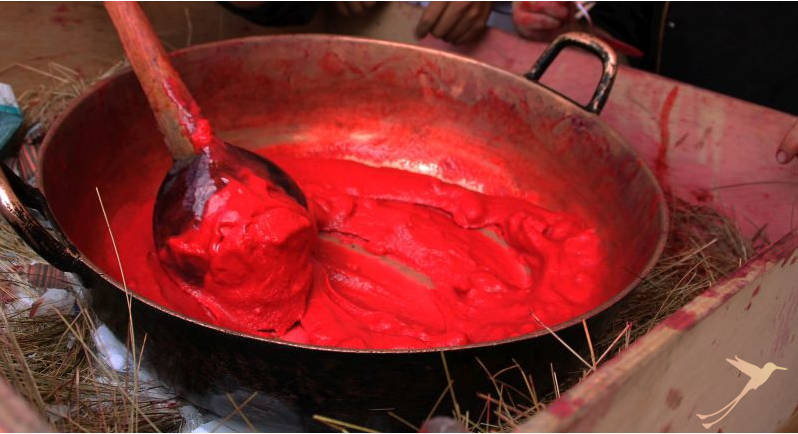
Pristiño
Pristiño consist of a thin fried wheat flour mass, made with butter, eggs, vanilla, sugar, salt, baking powder and water, which has a slight anise flavour and is accompanied with panela honey. The pristiños are typical in the month of December before Christmas, when they can be tasted in the majority of the restaurants of the country.
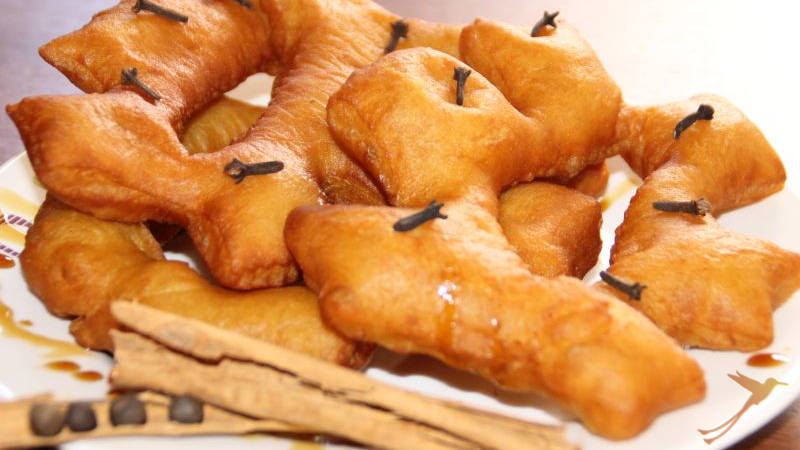
Quesadilla
Quesadilla is one of the most traditional sweets. The main ingredient is cream cheese. The quesadilla is very creamy, almost like butter. It contains sugar, egg yolks, flour and achira starch. The success for the preparation is to bake them in a brick oven. You can experience its unique taste in some cafés in the historic center of Quito. The most famous and very recommendable place in Quito is “Quesadillas de San Juan”, located in the Street Deifilio Torres N13-140 in front of the old military hospital and today’s Center for Contemporary Art. Its opening hours are Monday to Saturday from 9AM to 7PM and Sundays from 9AM to 5PM.
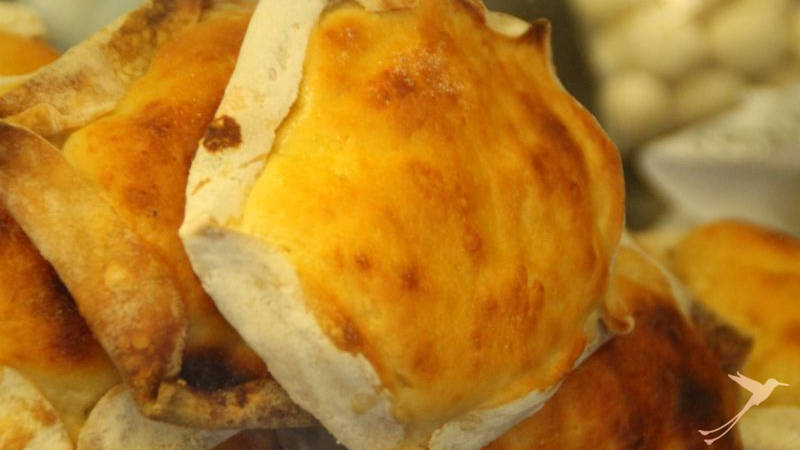
Quimbolito
Quimbolito is an Ecuadorian pastry. It is prepared with maize flour and is wrapped in leaves of a plant called Achira, and is then steamed. It has a fine sweetness, so it can be served with chocolate, coffee, milk or tea. You can find quimbolitos in supermarkets, at markets, the majority of restaurants in Quito and in the Andean region of Ecuador.
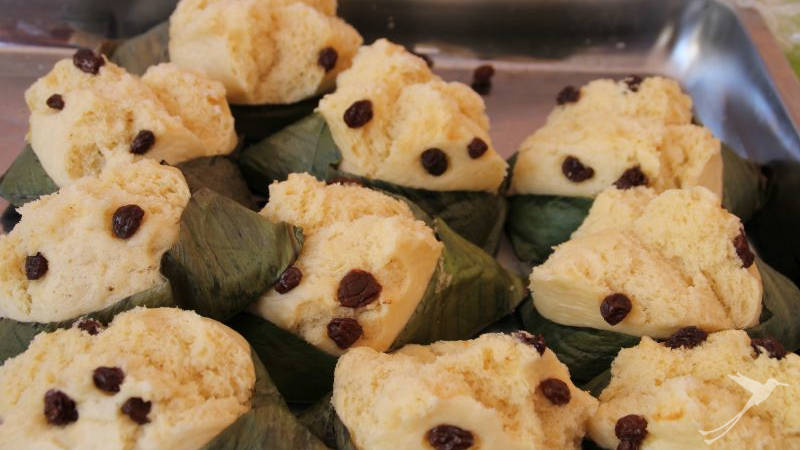
In every corner of Ecuador you can find typical drinks and food that are part of the culinary destination and the own cultural identity of the country.
With its aromas and colours it fills the tables of Ecuadorians and those who feel eager to try it with joy!
visit our other channels
Recent Posts
- From Manglaralto to Pacoche and surroundings April 18, 2024
- Excursions within the rainforest region of Ecuador April 5, 2024
- Ecuador in a state of emergency?! My personal experience March 22, 2024
- The 10 most beautiful lakes and lagoons in Ecuador – Part 2 March 12, 2024
- The 10 most beautiful lakes and lagoons in Ecuador – Part 1 February 23, 2024